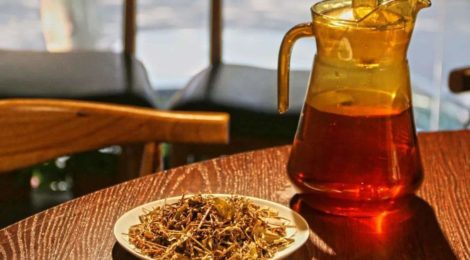
The Taste of Summer
Dear readers, this is our last issue of Chongqing Stories in this semester. Although there have been many rainstorms in Chongqing recently, the Slight Heat (note 1) has passed and the temperature is gradually rising. This city is going to turn on the “stove” mode soon. So, what kind of delicacies can Chongqing offer during the hot summer?
There’s a cheap tea occupying an important place in the mind of old Chongqing people ——”Laoyin Tea”. As the nasal sound and lateral sound are always mixed in Chongqing dialect, it was mispronounced as “Laoying (literally means ‘eagle’) Tea”. Laoyin tea’s color is reddish-brown, like black tea, but their tastes are very different, because the tea leaves of Laoyin tea are not from the camellia tree, but from the tree of Litsea coreana Levl, which is an evergreen tree of cinnamomum, widely distributed in the Yangtze River Basin and the areas to the south of the Yangtze River in China. No one knows since when the ancestors found that the leaves boiled soup has the function of engendering liquid and quenching thirst so as to relieving the heat of summer. For this reason, this drink has been handed down from generation to generation.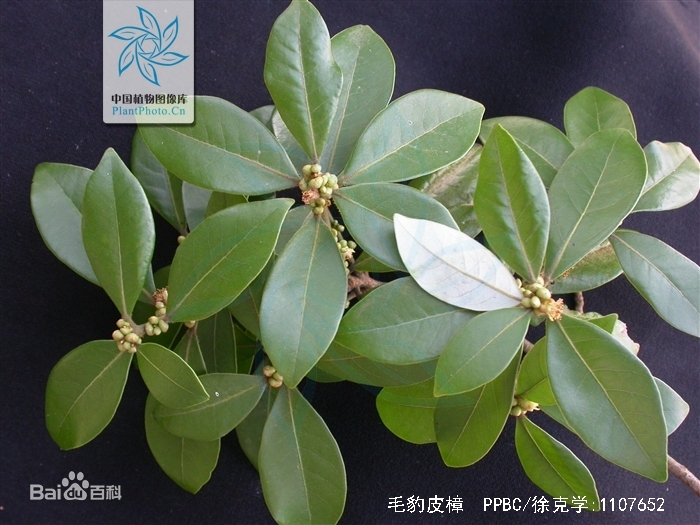
Leaves of Litsea coreana Levl. var. lanuginosa (Migo) Yang et. P. H. Huang
At first, those who drank Laoyin Tea were mostly poor working people loading/unloading or carrying goods. You can see tea stalls in the shadow on every dock and path along the mountain. It took only a few cents to enjoy enough Laoyin Tea to beat the heat. With the increase of people’s income and the diversity of beverage market, young people who like to drink coke, milk tea and sparkling water have become the main consumers. Now, there are hardly any tea stands selling Laoyin Tea, and only some restaurants still provide this tea for free. However, some old hotpot restaurants not only offer Laoyin tea for guests to drink, but also add tea soup to the pot and boil it with the hotpot ingredients, giving the hotpot a different flavor.
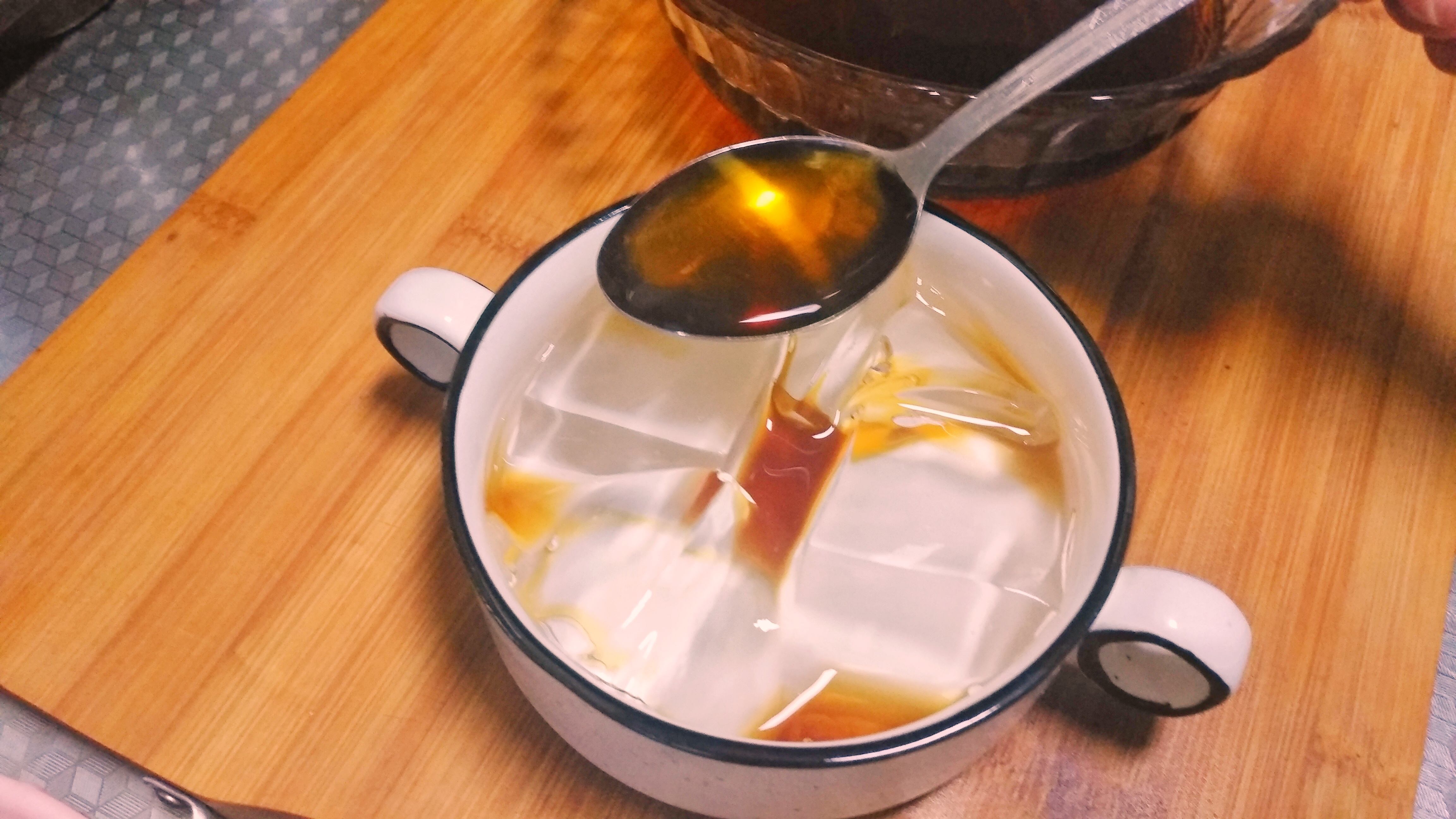 Bingfen and brown sugar water
Bingfen and brown sugar water
In addition to Laoyin Tea, two traditional desserts are also popular among Chongqing people: Bingfen (literally “Ice Powder”) and Liangxia (literally “Cold Shrimp”).
Bingfen is crystal clear and has a cool and smooth taste. People who do not know it will think it is jelly, but Bingfen does not use edible gelatin, which makes it totally different from jelly. Bingfen is made from seeds of Nicandra Physalodes (Linn.) Gaertn, a vegetable dish native to South America and clarified limewater (calcium hydroxide solution). The method of producing it is also very simple: putting the seed into the gauze bag, then immersing it in clean water and gently rubbing it, finally pouring into lime water and let standing for several hours. Finally it’s eatable after it’s solidified and added with brown sugar water.
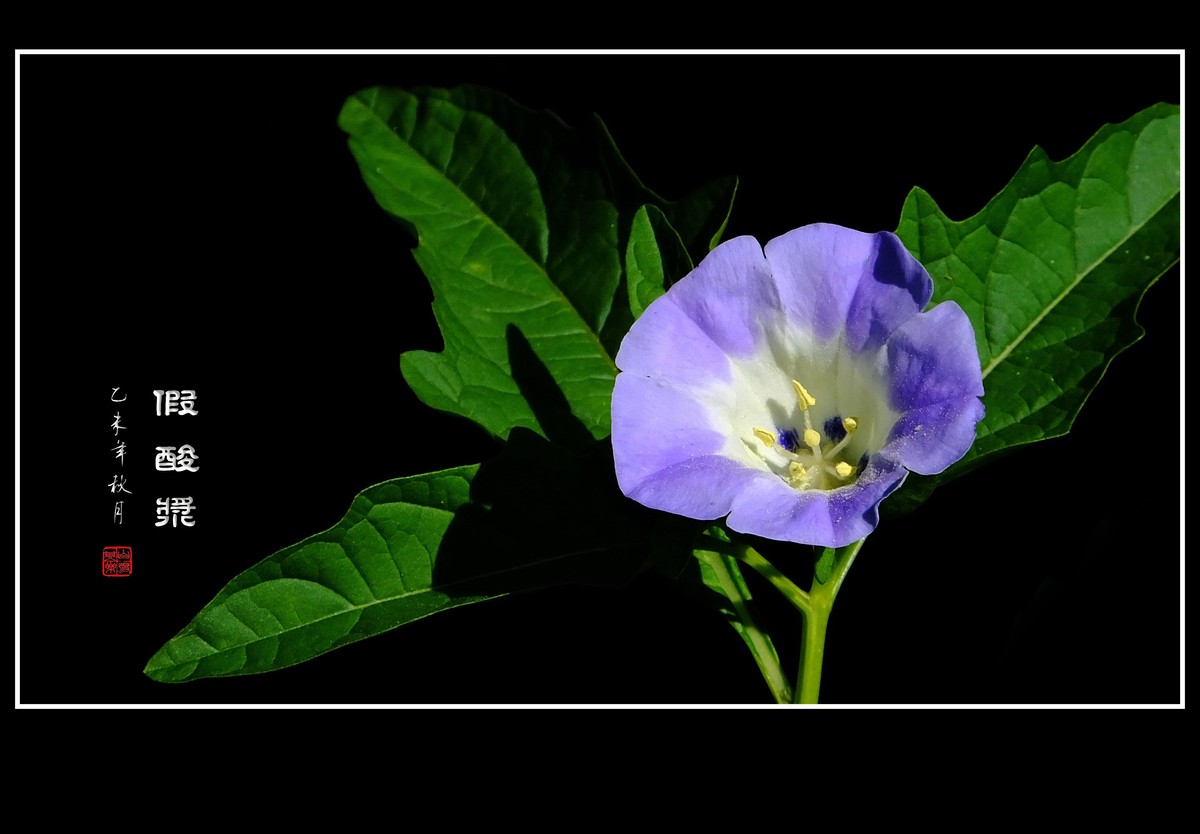 Flower of Nicandra physalodes (Linn.) Gaertn
Flower of Nicandra physalodes (Linn.) Gaertn
Liangxia (literally “Cold Shrimp”), although there is “shrimp” in the name, its raw material is rice: grind rice to powder, add water and boil it into thick rice. Then use a colander to squeeze the thick rice into cold water at the shape of shrimps, which is why there’s “shimp” in its name. The traditional way of eating Liangxia is the same as Bingfen, mixing with brown sugar water in an appropriate proportion. One bite is enough to cool you down.
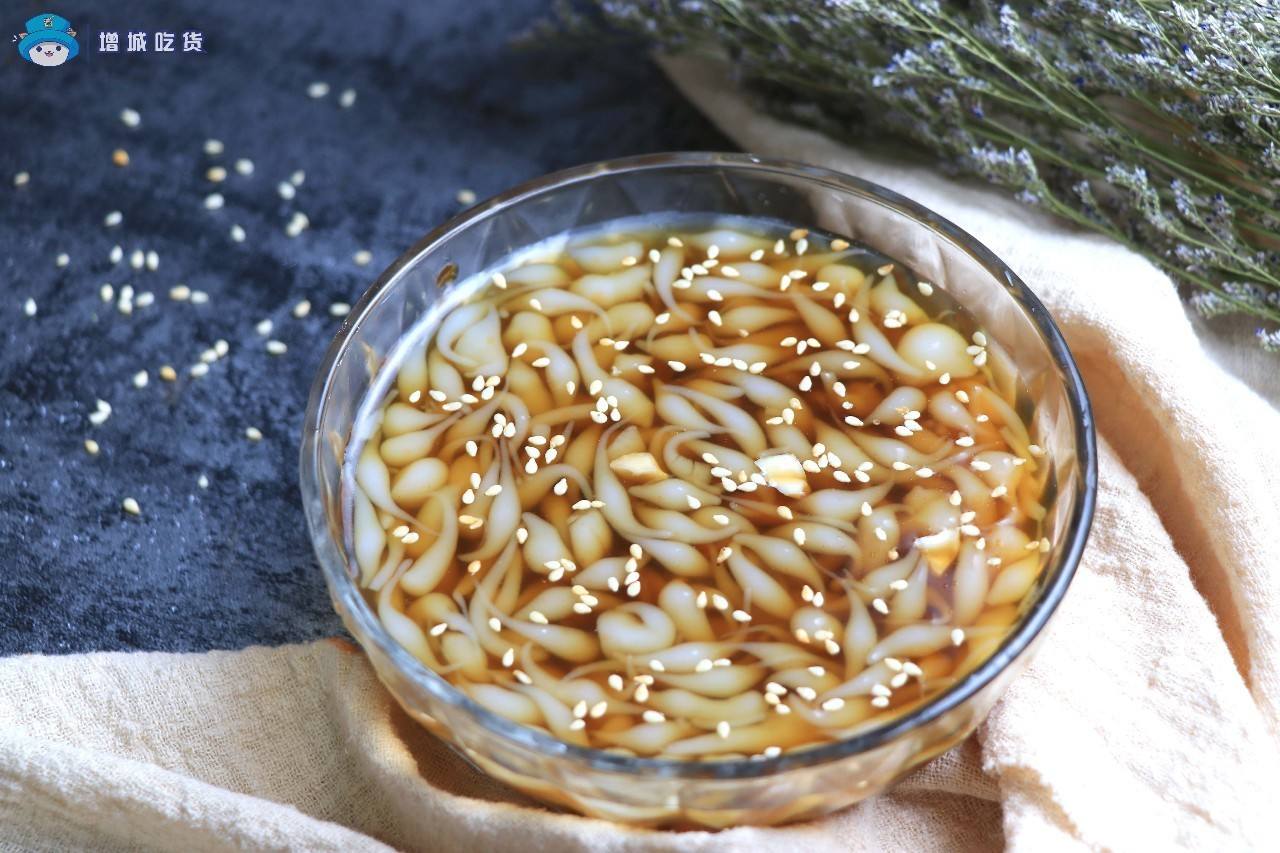 Liangxia
Liangxia
Vendors used to carry a pole peddling Bingfen and Liangxia only in the summer. Things are different now: those delicacies are sold in specialized shops all the year round, and many restaurants also add these dessert to their menu for customers, and upgraded them to a variety of flavors with rich ingredients, such as the white sesame, peanut, red jujube, Chinese wolfberry, raisins, hawthorn pieces, fermented glutinous rice, and a variety of fruits and jam.
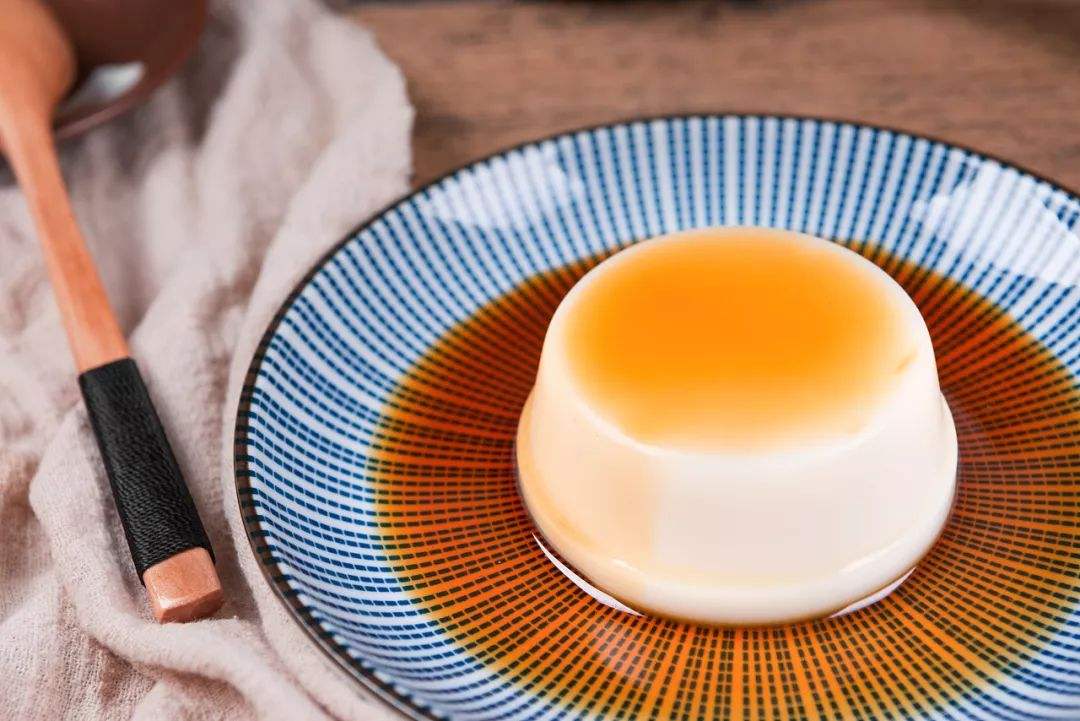
Lianggao
In recent years, new-style desserts like Lianggao (cake made of glutinous rice served cold in summer), iced Tangyuan (sweet dumplings made of glutinous rice flour) and Shaoxiancao, an herbal jelly, a traditional characteristic sweet of Fujian Min’nan Area and Taiwan Area were introduced to Chongqing, having become the indispensable summer food for Chongqing people together with Bingfen and Liangxia. Dear readers, we wish all of you a great summer time! See you in September!
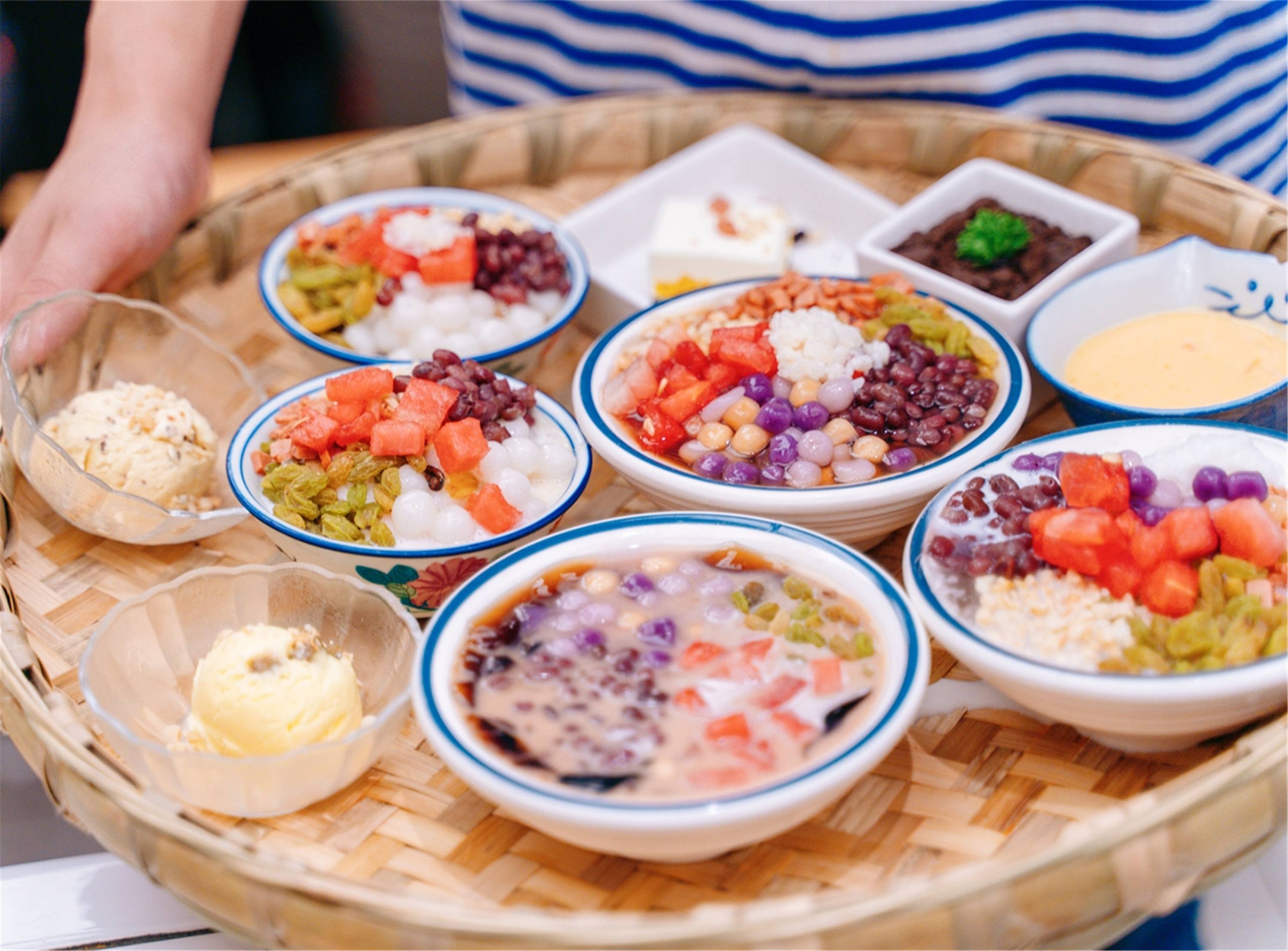
Many choices of desserts of summer
Note 1: “Slight Heat”: ranks the 11th among the 24 solar terms (节气). Ancient Chinese people divided the annual cycle of the sun into 24 parts, each of which is a “solar term” and has about 15 days. This set of legislation is the cornerstone of China’s agricultural development. Slight Heat refers to the beginning of hot weather, and will gradually extend to Great Heat — the hottest time of the year.
“节气” Solar Term :The Chinese 24 Solar terms, also known as the 24 seasonal division points, in the Chinese lunisolar calendar originated in ancient China and then spread to East Asia and South-East Asia. They are calculated from the position of the Sun on the ecliptic, that divides the year into 24 equal periods. Chinese ancestors observed the energy changes in Nature and established this way of seasonal calculation to guide activities in human life, including agricultural affairs, clothing, diet, housing, transportation, health preservation, moods management, etc.. They played a very important role in people’s basic essential needs in life in China in the past and still function well today.
Zhang Yangxin




